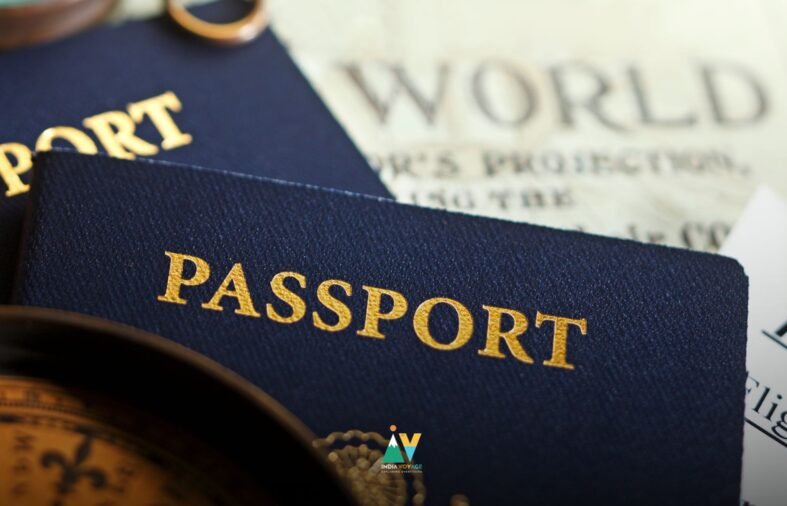The Indian passport, a vital tool for international travel for millions, has experienced a dynamic journey in global rankings over the past 15 years. Various indices, including the Henley Passport Index, Global Passport Index, Passport Index, and Nomad Capitalist Passport Index, evaluate passports based on factors like visa-free travel, economic opportunities, and personal freedoms. In 2025, the Indian passport ranks between 69th and 148th globally, depending on the index. This article delves into its current position, tracks its evolution from 2010 to 2025, and explains the criteria shaping these rankings.
Indian Passport’s Global Rank in 2025
In 2025, the Indian passport’s standing varies across key indices:
- Henley Passport Index: Positioned at 85th, granting visa-free or visa-on-arrival access to 57 countries.
- Global Passport Index: Ranked 69th, with a mobility score of 75 (29 visa-free, 44 visa-on-arrival, 2 eTA).
- Passport Index: Placed at 72nd, offering entry to 74 destinations (26 visa-free, 44 visa-on-arrival, 4 eTA, 124 visa-required).
- Nomad Capitalist Passport Index: Ranked 148th out of 199, tied with Comoros, due to a broader evaluation framework.
These rankings reflect India’s moderate global mobility, with access to nations like Thailand, Malaysia, and the Maldives, but restricted entry to major destinations such as the US, EU, and China.
Evolution from 2010 to 2025
The Indian passport’s global rank has seen ups and downs over the past 15 years, influenced by diplomatic efforts, global events, and visa policy shifts. Below is a year-by-year overview, primarily based on the Henley Passport Index, with insights from other sources:
- 2010–2012: Held steady at approximately 74th–76th, with access to ~50–52 destinations. Early visa-free agreements in Asia and Africa supported this position.
- 2013–2014: Reached 74th in 2013, but slipped to 76th in 2014, with ~52 destinations. Mobility remained consistent but limited.
- 2015: Fell to 88th, with ~52 destinations, reflecting stricter global visa policies.
- 2016–2017: Improved to 85th–87th, with access to ~55 destinations, bolstered by agreements with countries like Indonesia.
- 2018–2019: Advanced to 81st–82nd, with ~56–58 destinations, driven by expanded visa-on-arrival access in Southeast Asia.
- 2020–2021: Ranked 81st–82nd, dropping to 90th in 2021 due to COVID-19 travel restrictions, with ~56 destinations.
- 2022–2023: Stabilized at 87th, with access falling to 52 destinations in 2023, reflecting post-pandemic challenges.
- 2024: Rose to 80th, with access to 62 destinations, thanks to new visa-free policies in Malaysia and Thailand.
- 2025: Declined to 85th (Henley), with 57 destinations, though mid-year reports noted a peak of 77th with 59 destinations. The Passport Index cites 74 destinations, highlighting methodological differences.
Over 15 years, visa-free access has grown from ~50 to 57–74 destinations, a gradual improvement. The highest rank was 74th (2013), and the lowest was 90th (2021). India consistently surpasses regional peers like Pakistan (103rd, 33 destinations) and Bangladesh (100th, 40 destinations) but trails China (60th, 141 destinations).
Ranking Criteria Explained
Each index employs unique parameters, affecting India’s position:
Henley Passport Index
- Core Criterion: Number of countries accessible without a pre-arranged visa (visa-free, visa-on-arrival, or eTA).
- Methodology: Each accessible destination earns 1 point; visa-required destinations score 0. Ties are resolved by prioritizing visa-free (not visa-on-arrival) access.
- Data Source: Relies on IATA data and Henley & Partners’ analysis.
- Impact on India: With 57 destinations, India ranks 85th, benefiting from regional agreements but constrained by visa requirements for major economies.
Global Passport Index
- Criteria:
- Mobility (70%): Counts visa-free, visa-on-arrival, and eTA access (India: 75 mobility score).
- Investment (15%): Assesses suitability for global business and banking (India’s score is lower due to financial limitations).
- Quality of Life (15%): Evaluates safety, healthcare, and economic prospects (India’s developing infrastructure impacts this).
- Impact on India: Ranked 69th, reflecting India’s economic progress alongside travel mobility.
Passport Index
- Core Criterion: Total destinations accessible without a pre-obtained visa.
- Methodology: Visa-free, visa-on-arrival, and eTA destinations each score 1 point.
- Impact on India: Ranked 72nd with 74 destinations, higher than Henley due to a broader visa-on-arrival count.
Nomad Capitalist Passport Index
- Criteria:
- Visa-Free Travel (50%): Similar to Henley, but weighted less.
- Taxation (20%): India’s complex tax system lowers its score.
- Global Perception (10%): Security concerns and visa restrictions affect India’s standing.
- Dual Citizenship (10%): India’s ban on dual citizenship is a disadvantage.
- Personal Freedom (10%): Assesses civil liberties and political rights.
- Impact on India: Ranked 148th, due to non-travel factors like taxation and dual citizenship restrictions.
Drivers of Change
- Diplomatic Progress: Visa-free or visa-on-arrival agreements with countries like Malaysia and Thailand have enhanced mobility.
- Global Crises: The COVID-19 pandemic (2020–2021) temporarily lowered rankings due to travel restrictions.
- Economic Influence: India’s growing global presence has secured more visa agreements, though major destinations still require visas.
- Regional Context: India outperforms South Asian neighbors but lags behind East Asian leaders like Singapore (1st, 195 destinations).
The Indian passport’s trajectory from 74th–76th in 2010 to 85th in 2025 (Henley) shows steady progress in global mobility, with visa-free access rising from ~50 to 57–74 destinations. While diplomatic efforts have expanded access to regions like Southeast Asia, visa requirements for key destinations limit its rank. The varying indices highlight different strengths: Henley focuses on travel freedom, while Nomad Capitalist penalizes India for taxation and citizenship policies. For the latest updates, check Henley Passport Index or Passport Index.











Leave A Reply